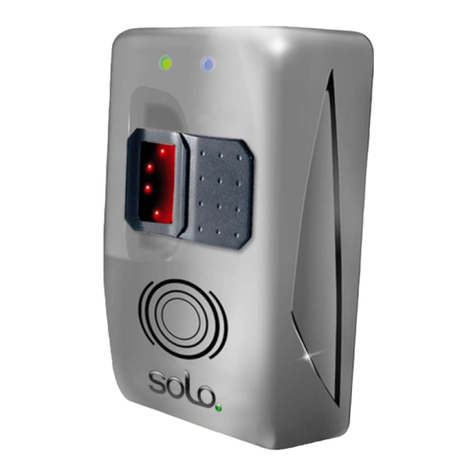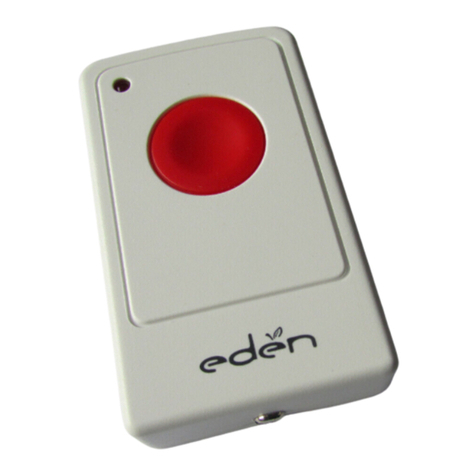
z“User2” is used to regularly arm and disarm the
system.
zThe “Cleaner” code can only be used to Away
arm the system.
PROBLEM? 8
Do not HESITATE to call us via our assistance hotline (at the end of the notice). Our technicians will have the pleasure to
help you make a perfect installation.
zThe “Temp” code will only disarm and Away arm
the system once. When away arming, the system
will automatically erase the code.
zEach PIN code consists of 4 digits and only User1
PIN code is activated with “0000” as factory
default. Before you set your own PIN Code,
“0000” has to be keyed in every time “Entering
PIN code” is required.
zTo set your own PIN code
Step 1. Move the cursor to the item “User PIN
Codes” then press “OK” the following
screen is displayed.
U s e r 1 ( o ) 0 0 0 0
U s e r 2 ( x )
C l e a n e r ( x )
T e m p ( x )
<
<N
NO
OT
TE
E>
>
)The “o” displayed next to “User1”
indicates only “User1” is activated with
“0000” factory default.
)The “x” displayed next to “User2”,
“Cleaner” and “Temp” indicates the
codes are disabled and can’t be
activated before a new PIN code have
been programmed for each of them.
Step 2. Use the arrow keys to select “User1”and
press “OK”
E n t e r N e w C o d e
. . . .
Step 3. You can key in your preferred 4-digit
number then press “OK”
<
<N
NO
OT
TE
E>
>
)Pressing “ “will clear the code field.
Pressing “ “while the code field is
empty, the screen will return to “General
Settings” screen, the original PIN Code
is retained.
Step 4. The screen will return to the previous
screen where the new code will be
shown. Setting the User1 PIN code is
completed.
Step 5. Follow the same steps to program and
activate User2, Cleaner and the Temp
PIN codes respectively.
<
<N
NO
OT
TE
E>
>
)“User1”, “User2”, “Cleaner” and
“Temp” codes have to be different.
When identical codes are selected, the
LCD will display a message “PIN in use,
select another!” to prompt the user to
choose a different code.
zTo Activate & Deactivate User PIN codes
zEach PIN code except “User1” can be
enabled/disabled at your discretion by
pressing the “” key.
zUse the “T”,”S”keys to select the
code number for deactivation and
activation.
zPress the “ ” key.
zThe display will toggle from enabled:
U s e r 2 ( o ) 1 1 1 1
to disabled:
U s e r 2 ( x )
And the “User2” code is not
available for use.
zPressing the “ ” key again, the
display toggles from disabled back
to enabled:
U s e r 2 ( o ) 1 1 1 1
The original PIN code resumes and
is displayed with a (o) indicating it is
in use.
<
<N
NO
OT
TE
E>
>
)User1 PIN code cannot be deactivated.
)When “User2”, “Cleaner” and “Temp”
codes are disabled, their codes retain
unless they are re-programmed again.
)Attempt to activate the “User2”,
“Temp”, or “Cleaner” codes before they
are programmed is prevented by a
prompt message “No code exist!” and
you are requested to enter a new code
for it.































